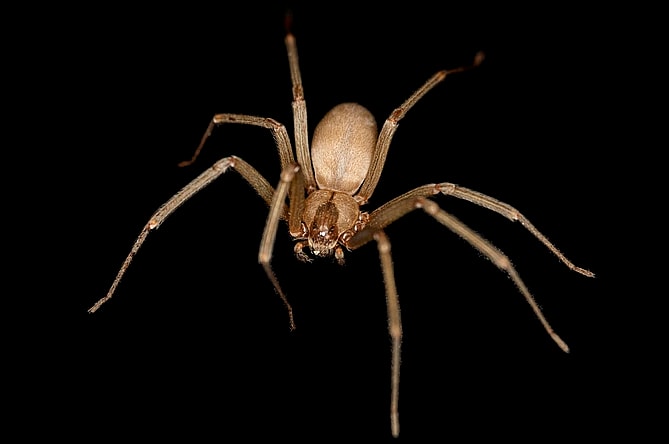
Spiders, with their eight legs and multifaceted eyes, have long fascinated and sometimes frightened people across the globe. Often misunderstood and unfairly maligned, these arachnids are crucial to many ecosystems as predators of insects and other small creatures. Among the myriad spider species, some stand out not only for their intriguing behaviors but also for their sheer size. The fascination with these colossal spiders often leads to questions about which of them holds the title of being the largest.
In the world of spiders, size can be measured in various ways—leg span, body length, or overall mass. While the mere thought of spiders as large as a dinner plate might send shivers down the spine of many, the truth is that these giants are more than just objects of fear; they are marvels of nature’s diversity. The impressive dimensions of the biggest spider in the world serves specific ecological purposes, such as hunting large prey or defending themselves from predators.
To answer the burning question of which spider claims the title of the biggest spider in the world, we need to consider a variety of species known for their size. From the enormous Goliath Birdeater to the strikingly large Giant Huntsman, these spiders represent the extremes of arachnid growth. Some of these spiders are renowned for their formidable leg spans, while others impress with their body length or overall mass.
Here, we delve into a countdown of the ten largest spiders in the world, exploring their unique characteristics and habitats and ending with the biggest spider in the world. This journey through the world of giant spiders will not only highlight their impressive sizes but also shed light on their ecological roles and behaviors. Whether you’re an arachnid enthusiast or just curious about these magnificent creatures, this article will provide a comprehensive overview of the biggest spider in the world known to science, culminating in a detailed look at the biggest spider in the world.
Also Read: 12 Extinct Animals That Became Extinct in the Last Century
10. The Brown Recluse (Loxosceles reclusa)

The Brown Recluse spider is often associated with ominous tales due to its venomous bite, but it is not the biggest spider in the world in terms of size. However, its impact on human health gives it a notable place in the discussion of large spiders. This spider is typically about 0.5 inches (1.3 cm) in body length, and its leg span can reach up to 2 inches (5 cm). Despite its relatively modest size compared to other giants, its venom can cause severe necrotic skin lesions and systemic reactions. Its defensive nature and venomous bite contribute to its fearsome reputation, and while it is not the biggest spider in the world, it is certainly one of the most notorious.
The Brown Recluse is often found in dark, undisturbed areas such as basements, attics, and closets. It prefers these secluded environments where it can hunt small insects. The spider is not aggressive and typically bites only in self-defense, but its venom can lead to serious medical conditions if not treated promptly. Though not the biggest spider in the world, its venomous reputation adds to the intrigue surrounding large spiders and highlights the varied threats they pose.
9. The Mexican Redknee Tarantula (Brachypelma smithi)

The Mexican Redknee Tarantula is a striking example of the impressive diversity found among large spiders. It is renowned for its vibrant orange-red markings on its black legs, making it one of the most visually striking spiders. The Mexican Redknee Tarantula can reach a leg span of up to 5 inches (13 cm), making it a substantial arachnid, though it does not surpass the biggest spider in the world in terms of size. This tarantula is well known in the pet trade due to its relatively docile nature and manageable size compared to other large spiders.
Native to the arid regions of Mexico, the Mexican Redknee Tarantula primarily feeds on insects and small invertebrates. Its venom is relatively mild compared to some of the larger species, and while its bite can cause discomfort and mild symptoms, it is not dangerous to humans. The spider’s size and colorful appearance contribute to its popularity among arachnid enthusiasts, though it does not hold the title of the biggest spider in the world.
Read More: What is the Oldest Dog to Ever Live?
8. The Bagheera Kiplingi (Bagheera kiplingi)

While not as colossal as the largest spiders mentioned, the Bagheera Kiplingi is noteworthy due to its intriguing size and behavior. This spider, named after the character Bagheera from Rudyard Kipling’s “The Jungle Book,” is one of the largest members of its genus and displays impressive dimensions relative to its peers.
The Bagheera Kiplingi, found in Central America and parts of Mexico, has a leg span that can reach up to 4 inches (10 cm). It is known for its distinctive coloration, with a striking combination of black and vibrant yellow or orange markings. The spider’s size, though not as grand as the Goliath Birdeater, places it among the notable large spiders due to its unique appearance and behavior.
What sets the Bagheera Kiplingi apart from many other large spiders is its diet and lifestyle. Unlike the majority of large spiders that are primarily insectivorous, the Bagheera Kiplingi is primarily herbivorous. It feeds mostly on plant material, particularly the leaves and flowers of certain acacia trees. This unusual diet makes it a fascinating subject of study among arachnologists and highlights the diversity in spider behavior and diet.
The Bagheera Kiplingi’s habitat includes tropical forests and savannas where it constructs relatively simple webs or nests. Although not the biggest spider in the world by leg span or mass, its size and unique ecological niche contribute to its significance among large arachnids. The spider’s herbivorous diet and distinctive markings make it a remarkable species within the spider world.
Despite its large size compared to many other spiders, the Bagheera Kiplingi does not possess the intimidating attributes often associated with the largest spiders. It is generally not aggressive toward humans and poses minimal threat. Its place in the world of large spiders is secured by its impressive size relative to its genus and its unique feeding habits.
In summary, while the Bagheera Kiplingi is not the biggest spider in the world, its considerable size, distinctive appearance, and herbivorous diet make it a notable addition to the list of large spiders. Its unique attributes and behavior underscore the remarkable diversity found within the spider world.
7. The Giant Huntsman Spider (Heteropoda maxima)
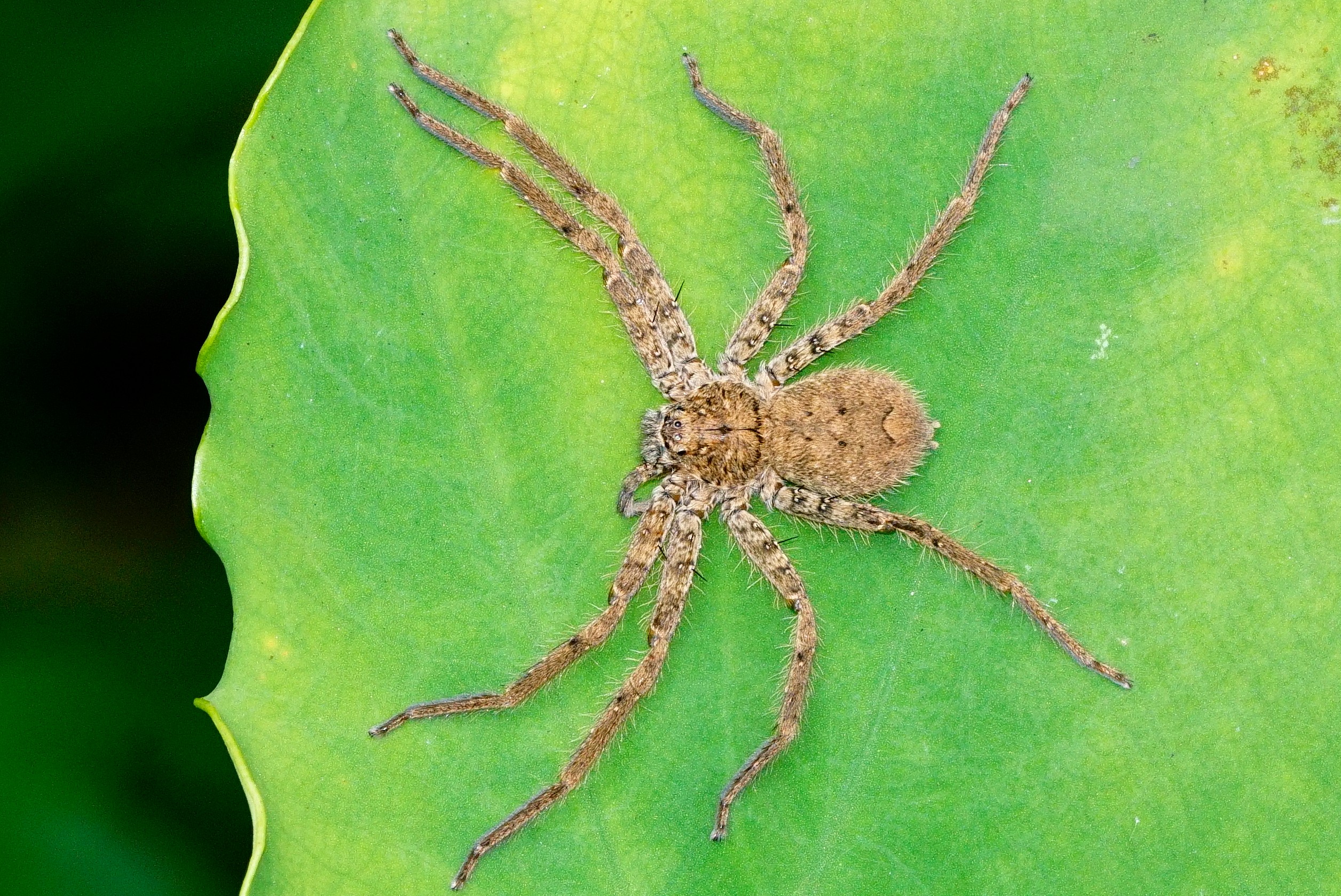
The Giant Huntsman Spider, discovered in Laos, is renowned for its impressive leg span, which can reach up to 12 inches (30 cm). This spider’s size, particularly its leg span, makes it one of the most expansive spiders, though its body mass does not match the largest tarantulas. The Giant Huntsman is a fast-moving, active hunter that relies on its agility rather than a web to capture prey. Its considerable leg span allows it to move quickly across surfaces in search of insects and other small prey.
The Giant Huntsman’s speed and large leg span contribute to its effectiveness as a predator. Found primarily in caves and other secluded environments, this spider’s large size makes it an impressive sight in its natural habitat. Although its leg span is remarkable, it is not the biggest spider in the world when considering body mass. However, its notable size and speed make it a standout among giant spiders.
Also Read: 8 Best Museums in DC and What They’re Known For
6. The Hercules Spider (Heteropoda venatoria)
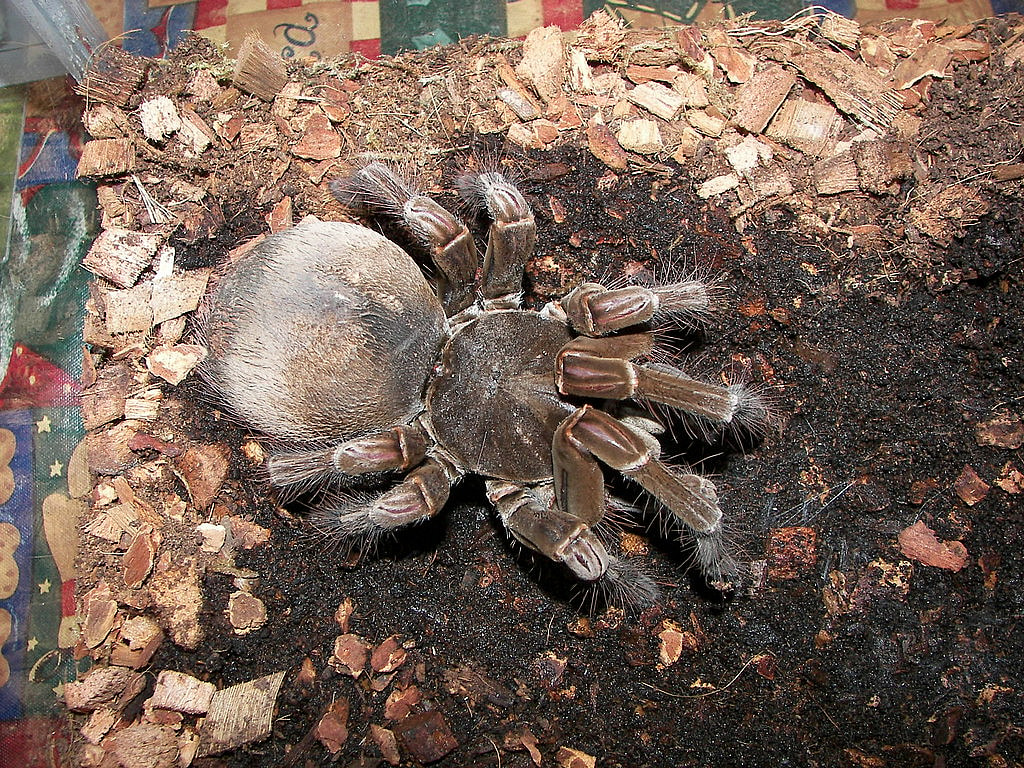
Often confused with the Giant Huntsman, the Hercules Spider is another large arachnid with a substantial leg span. The Hercules Spider can achieve a leg span of up to 12 inches (30 cm), similar to its close relative. However, its body mass is generally lighter compared to other large spiders. Native to tropical and subtropical regions, the Hercules Spider shares many characteristics with the Giant Huntsman, including its predatory behavior and impressive leg span.
The Hercules Spider’s large size and agility make it a skilled hunter of insects and other small prey. It is known for its rapid movements and ability to navigate through its environment with ease. Though not the biggest spider in the world in terms of body mass, its considerable leg span and hunting prowess make it an impressive representative of large spiders.
5. The Tarantula (Theraphosa stirmi)
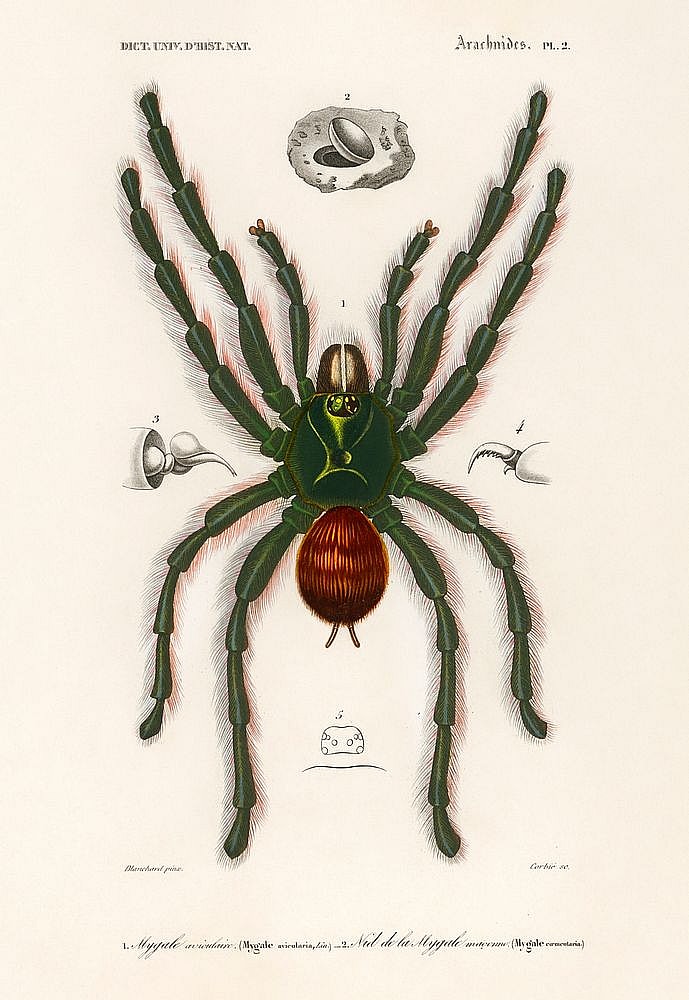
The Tarantula, also known as the Titan Pinktoe, is closely related to the Goliath Birdeater and shares many impressive attributes. This tarantula can reach a leg span of up to 11 inches (28 cm), making it one of the largest spiders by leg span. The Titan Pinktoe’s robust build and considerable size contribute to its impressive stature among giant spiders. Native to the rainforests of South America, it is known for its slow movement and substantial body, which add to its size.
The Titan Pinktoe’s size and strength make it a formidable predator of insects and small invertebrates. Its robust body and significant leg span highlight its impressive dimensions. While it does not surpass the Goliath Birdeater in overall size, its notable attributes contribute to its status as one of the largest spiders. Despite its impressive size, it is not the biggest spider in the world by mass.
Read More: What’s the World’s Rarest Flower? A Beautiful Bloom
4. The Brazilian Wandering Spider (Phoneutria fera)
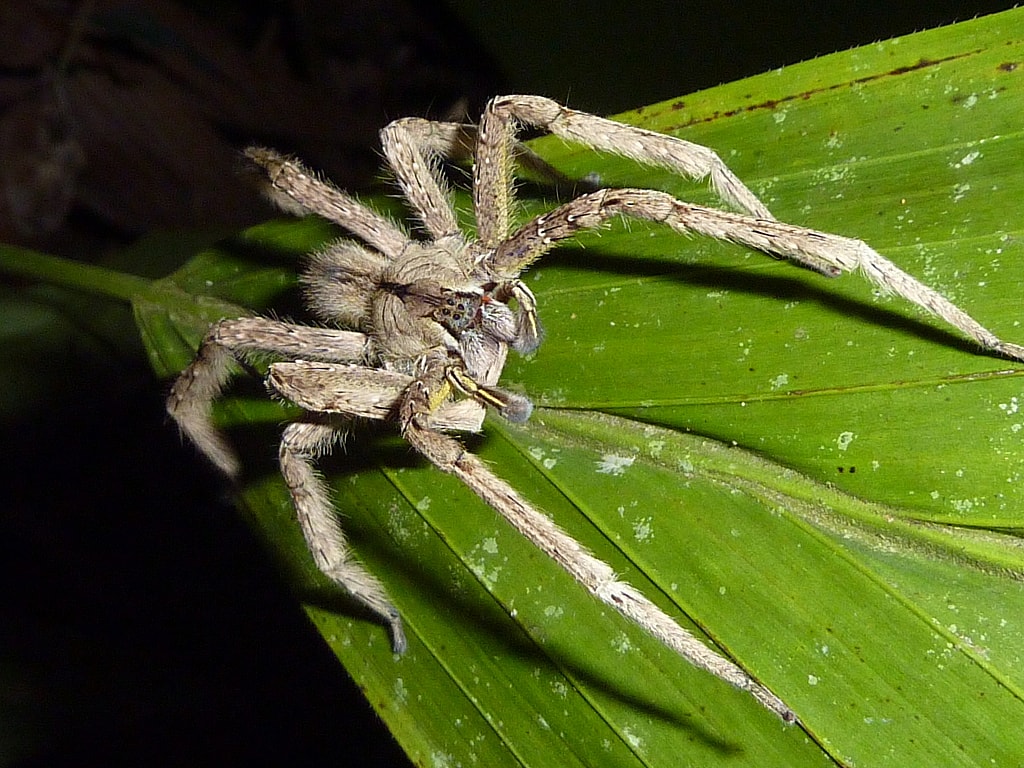
The Brazilian Wandering Spider, also known as the armed spider, can have a leg span of up to 6 inches (15 cm). Though not the largest spider by leg span, it is notable for its aggressive behavior and highly potent venom. The Brazilian Wandering Spider is renowned for its defensive nature and the severe medical issues its venom can cause. Its significant size, combined with its aggressive reputation, makes it a noteworthy spider among large arachnids.
Native to the tropical regions of South America, the Brazilian Wandering Spider is known for its wandering behavior, as it does not spin a web to catch prey. Instead, it actively hunts and forages for insects and small animals. The spider’s venom is one of the most toxic among arachnids, contributing to its fearsome reputation. Though not the biggest spider in the world in terms of leg span or body mass, its size and venom make it a significant species in discussions about large spiders.
3. The King Baboon Spider (Pelinobius muticus)

The King Baboon Spider, native to Africa, is a large and robust species that achieves a leg span of up to 8 inches (20 cm). This spider’s size, combined with its powerful bite, makes it one of the more formidable tarantulas. The King Baboon Spider’s thick and sturdy body gives it an imposing presence, though it does not reach the size of the biggest spider in the world. It is often found in burrows and exhibits a defensive nature, making it an impressive arachnid in its habitat.
The King Baboon Spider’s large size and strength contribute to its role as a predator of insects and other small animals. Its robust build and defensive behavior highlight its impressive attributes. While it is not the largest spider by overall size or mass, its significant dimensions and strength make it a notable species among giant spiders. Its impressive size and defensive nature contribute to its status as one of the larger spiders in the world.
Read More: Who Is the Strongest Person in the World? 1 Powerful Man
2. The Pink Foot Goliath Tarantula (Theraphosa apophysis)
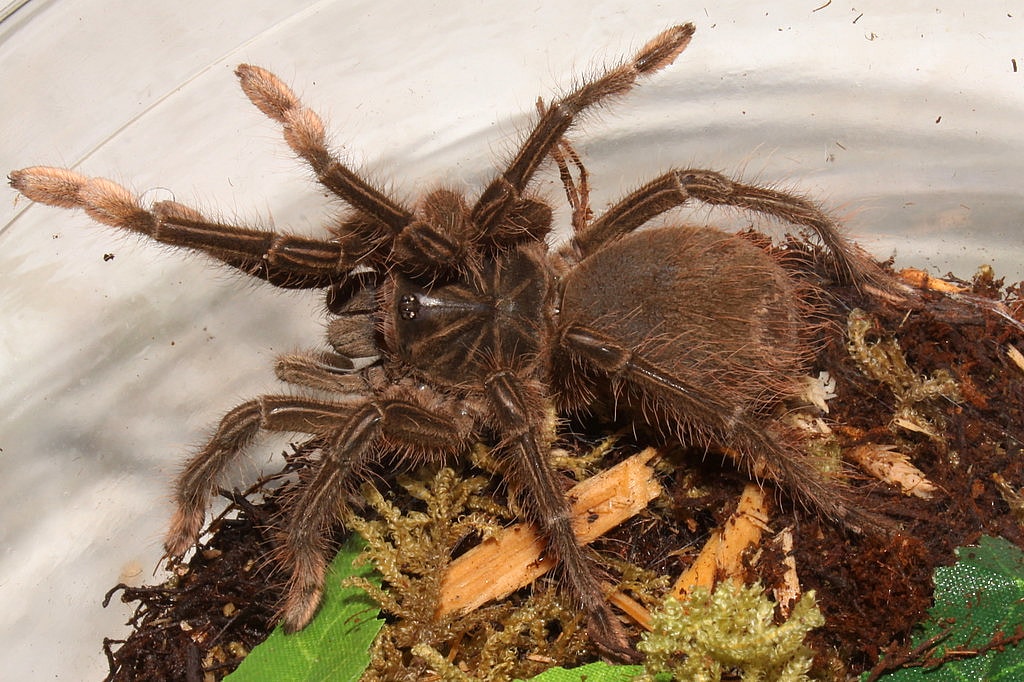
The Pink Foot Goliath Tarantula, with a leg span reaching up to 10 inches (25 cm), is another massive tarantula. Its name is derived from the distinctive pink coloration on its legs. This spider’s size, particularly its considerable leg span, makes it one of the largest tarantulas by leg span. Native to South America, the Pink Foot Goliath Tarantula is known for its robust build and impressive appearance.
The Pink Foot Goliath Tarantula’s size and striking appearance contribute to its status among the largest spiders. Its impressive leg span and robust body make it a formidable presence in its rainforest habitat. While it does not surpass the Goliath Birdeater in terms of overall size, its considerable leg span and distinctive coloration highlight its significant size. Despite not being the biggest spider in the world, its notable attributes make it a remarkable example of large arachnids.
1. The Goliath Birdeater (Theraphosa blondi) – The Biggest Spider in the World
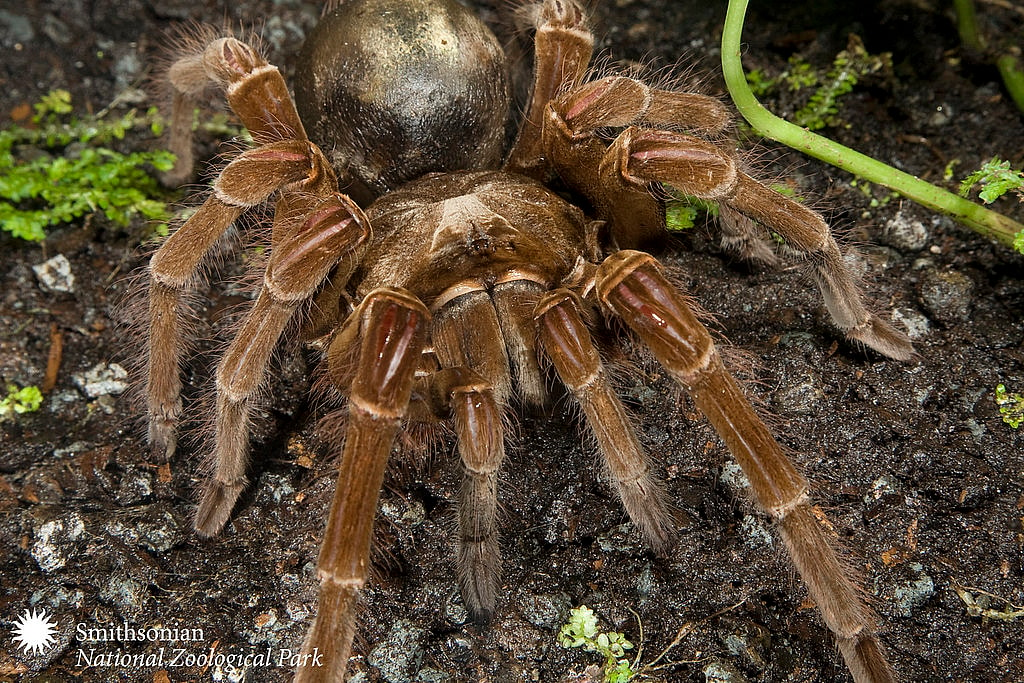
Topping the list as the biggest spider in the world, the Goliath Birdeater is a true giant. With a leg span that can exceed 11 inches (28 cm) and a body mass that can reach over 6 ounces (170 grams), it is the largest spider by both mass and overall size. Native to the rainforests of South America, the Goliath Birdeater is not only known for its size but also for its powerful bite and impressive hunting capabilities. Despite its fearsome reputation, the Goliath Birdeater is a crucial part of its ecosystem, preying on a variety of smaller animals and maintaining the balance within its environment.
The Goliath Birdeater’s massive size, both in terms of leg span and body mass, solidifies its status as the biggest spider in the world. Its impressive dimensions and formidable presence make it a standout among giant spiders. Although it rarely preys on birds, the Goliath Birdeater’s ability to tackle large prey is a testament to its size and strength. Its role in the ecosystem and its sheer scale make it the undisputed largest spider in the world.
In summary, while the Goliath Birdeater claims the title of the biggest spider in the world, each of these impressive arachnids has unique attributes that contribute to their status as giants in the spider world. From the agile Giant Huntsman to the robust King Baboon Spider, these spiders showcase the diverse and fascinating nature of arachnid life.


